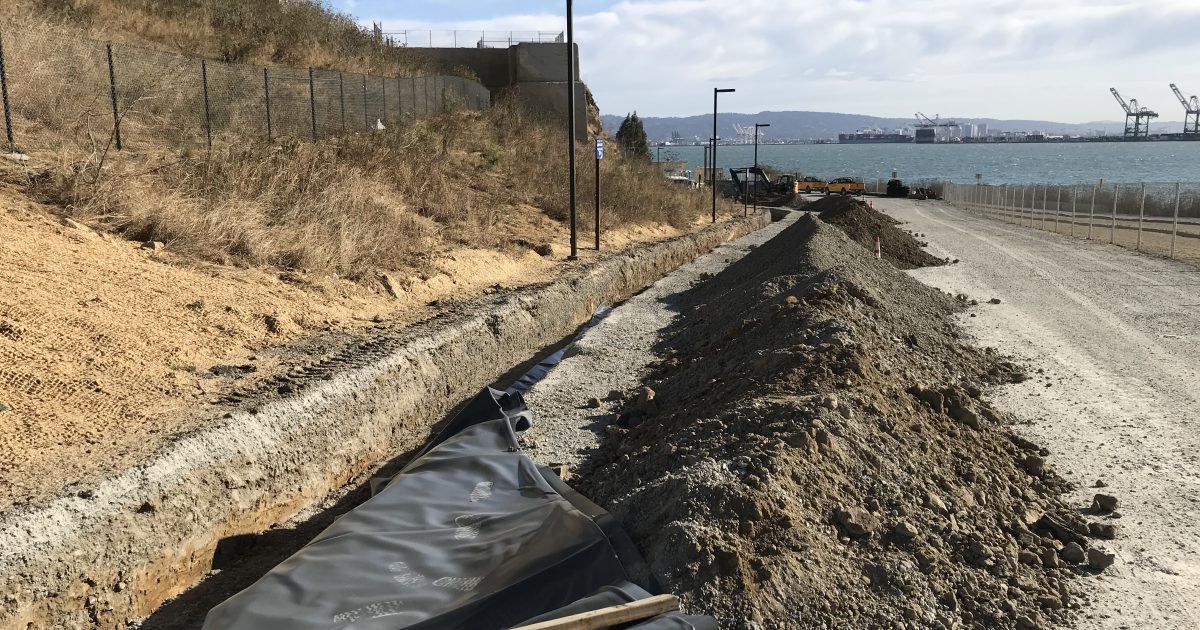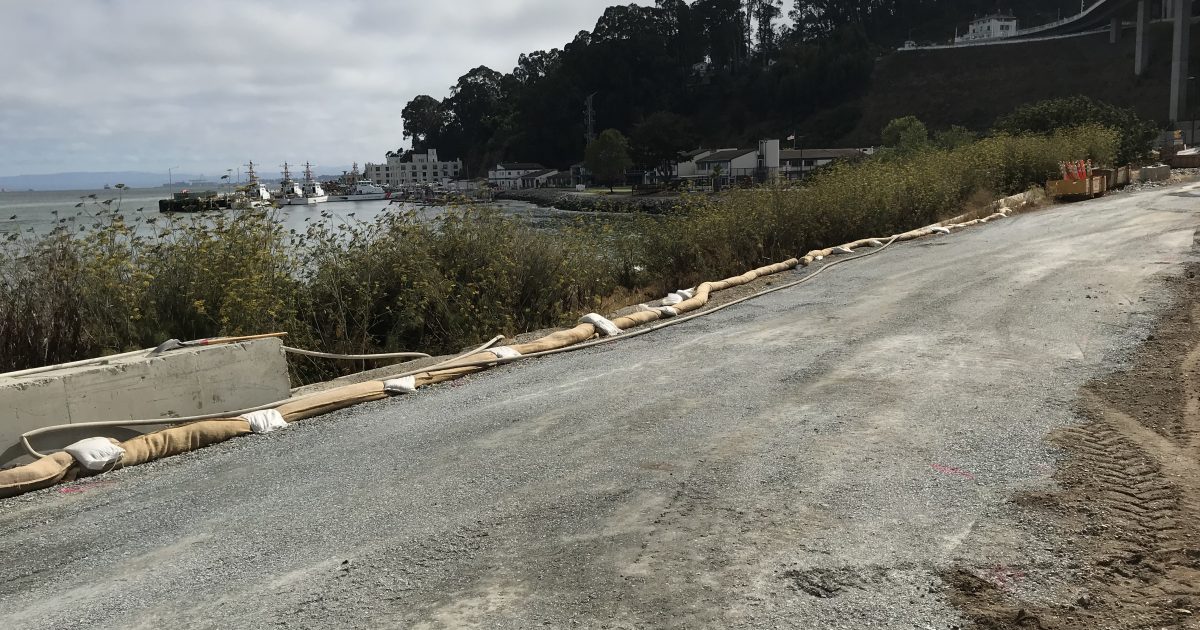The California Department of Transportation (Caltrans) removed and performed underwater blasting of the original Bay Bridge pier foundations within San Francisco Bay that supported the original bridge structure. This work was performed as part of the dismantling of the historic East Span of the San Francisco-Oakland Bay Bridge (SFOBB) for the SFOBB East Span Seismic Safety Project after the new replacement bridge was completed in 2013. The project also included new pedestrian bridges and observation platforms utilizing several existing near–shore marine foundations as platforms for public–access facilities.

ENGEO managed the SWPPP (Stormwater Pollution Prevention Plan) for the project in cooperation with the Kiewit/Manson JV Team and Caltrans. We prepared the project SWPPP, Dewatering and Discharge Plan, and Materials Handling and Containment Plans for the demonstration Pier E3 demolition, as well as the subsequent Piers E4 through E18 demolition and Pier E2 and Piers E21 through E23 retention project contracts. These plans were approved by the San Francisco Bay Regional Water Quality Control Board and several other Federal and State agencies. ENGEO served as Water Pollution Control Manager (WPCM) for these contracts and performed Qualified SWPPP Developer (QSD) and Qualified SWPPP Practitioner (QSP) services.

The Pier E3 project was conducted as a demonstration project to verify the concept of underwater blasting of the historic pier structures as the most effective method of removing the piers without impacting surrounding water quality, air quality, or marine life. The success of the Pier E3 project allowed the majority of the remaining historic concrete pier structures (E4 – E18) to be mechanically removed down to an elevation near sea level, then blasted, so that they imploded inward into void spaces in the existing hollow portions of the pier structures beneath the sea floor. This method eliminated off-hauling of most of the demolished material. The project had to comply with strict environmental regulations and minimize impacts to marine life, water quality, and air quality. ENGEO worked together with the Kiewit/Manson JV team to provide a SWPPP document that contained unique reporting measures and refine several impact minimization strategies such as the use of a “bubble curtain” during the blasting, which had not been previously used in California. This project approach was estimated to reduce the pressure waves from each pier implosion by about 80% based on the Pier E3 experience.
ENGEO conducted contractor training for all relevant water pollution control measures at the beginning of each phase of the project. During construction, ENGEO performed SWPPP monitoring including inspection of overwater debris barges and other marine vessels involved with the project, to verify the contractor’s conformance with project SWPPP and materials handling requirements. Strict overwater storage and containment protocols needed to be employed by the contractor in order to comply with the SWPPP standards approved by the RWQCB and other Federal and State agencies. Rainwater sampling was performed on overland portions of the project in conformance with Risk Level 2 SWPPP standards. All reporting was accepted by Caltrans and the San Francisco Bay Regional Water Quality Control Board at the end of the project, who both provided oversight.